Art in the Making. Artists and their Materials from the Studio to Crowdsourcing, by Glenn Adamson, Director of the Museum of Arts and Design (New York), and Julia Bryan-Wilson, Associate Professor of Modern and Contemporary Art at the University of California, Berkeley.
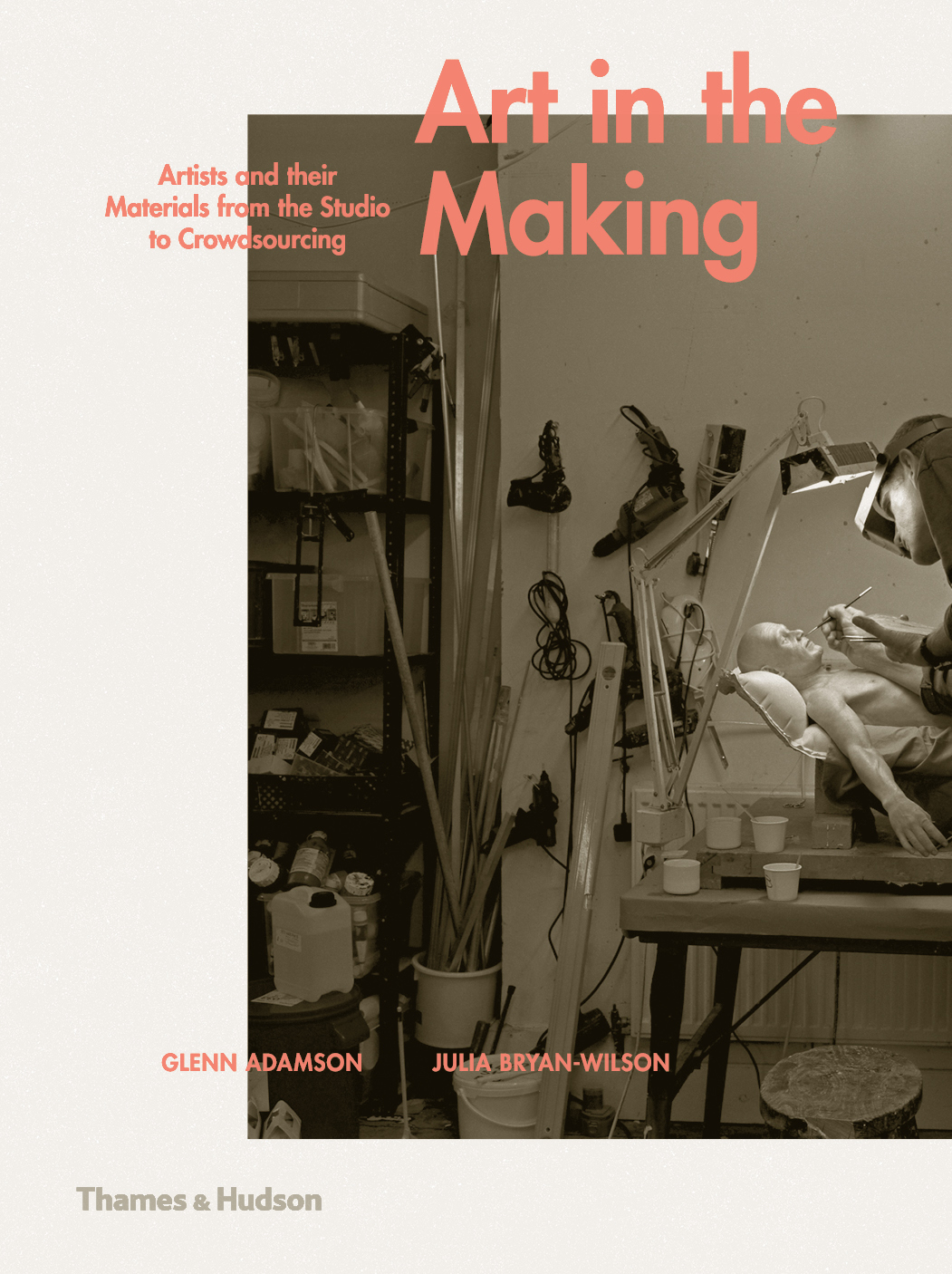
Publisher Thames & Hudson writes: From painting to digital technologies to crowdsourcing, over the last few decades the means of making artworks have become more extraordinary and diverse. Yet we rarely consider the implications of how art is made.
In this wide-ranging exploration of methods and media in art since the 1950s Glenn Adamson and Julia Bryan-Wilson take the reader behind the scenes of the studio, the factory, and other sites where art is created. They show how the materials and processes used by artists are vital to considerations of authorship, and to understanding the economic and social contexts from which art emerges.
‘Art in the Making’ focuses on the intersection of thinking and making through chapters focusing on a particular process: painting, woodworking, building, performing, tooling up, cashing in, fabricating, digitizing and crowdsourcing. Discussions of broader themes are woven together with detailed examples and visuals, revealing the logic involved in the choice of techniques and materials.
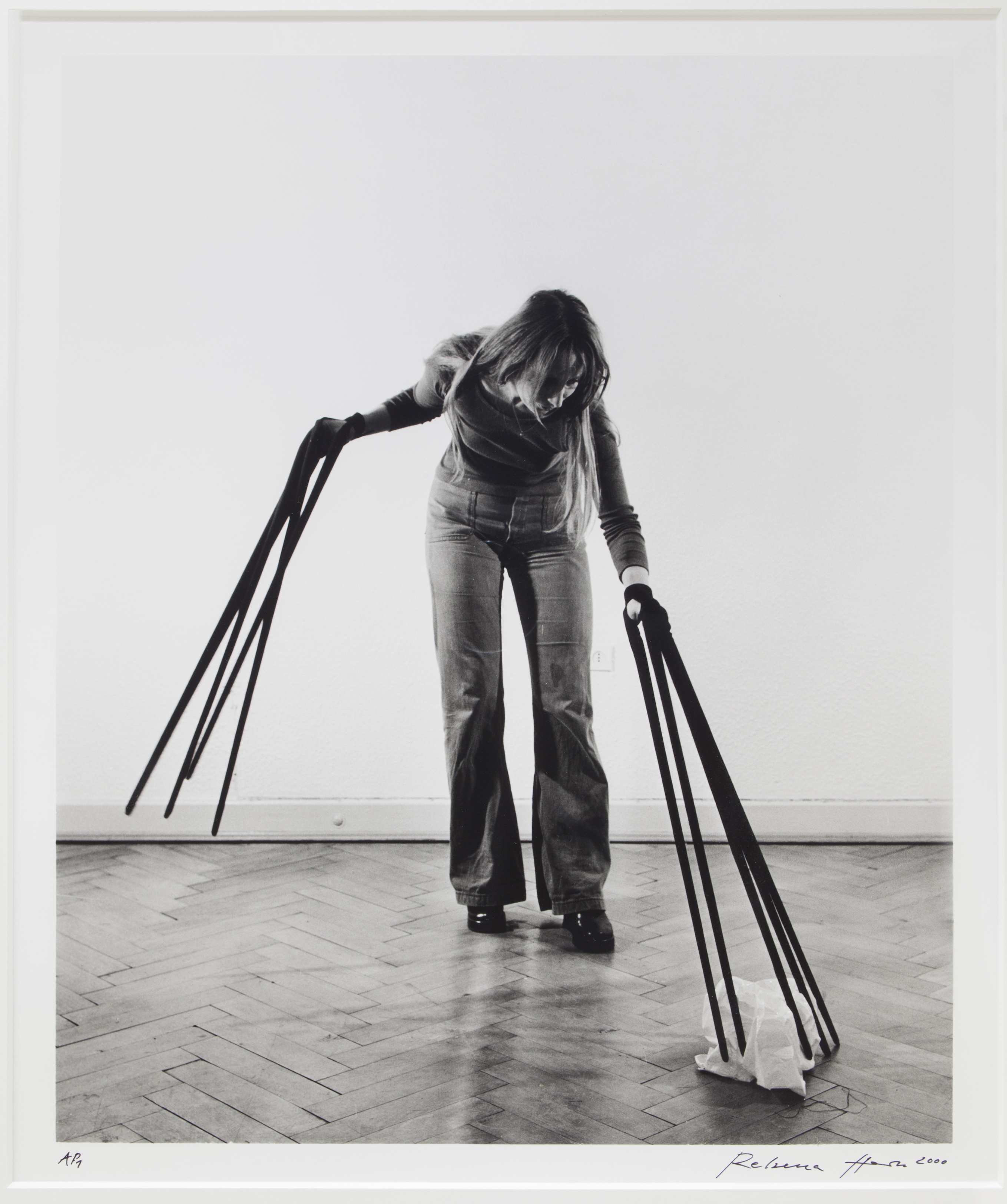
Rebecca Horn, Handschuhfinger (Finger Gloves), 1972-2000
I wouldn’t say that ‘Art in the Making’ is a guide to understanding contemporary art but it can help you get there. It certainly helped me appreciate a series of contemporary works i had so far dismissed as being superficial, purely formal or dated. The book gives context and depth to artworks by examining the matter of their production and the ideas, ideologies and choices behind it. This focus on the techniques, tools, crafts and materials is apparently quite uncommon in contemporary art, at least in the way it is critiqued, presented and debated today. Quite the opposite of what usually happens with new media art where techno sophistication and materials have precedence over concepts. End of bitchy parenthesis.
This survey of how art is made starts in the 1950s, focuses mostly on artists from the USA and the UK but is otherwise full of very good surprises, unusual suspects and unexpected perspectives. One moment, Frida Kahlo is painting in bed. Next, Aaron Koblin is asking workers on Amazon’s Mechanical Turk to draw him a sheep. I find these juxtapositions illuminating and thought-provoking. The authors draw parallels between Sol LeWitt’s Wall Drawing and coding, for example. Or trace back the origins of crowdsourcing to grassroot organizing.
There are 8 chapters in the book:
Chapter 1 is about painting and innovative uses of pigments. Two great examples would be Olaf Breuning arranging smoke bombs into grids which he then ignites and photographs as the vibrant pigments evaporate with the smoke. And Niki de Saint Phalle literally shooting on paintings.

Olaf Breuning, Smoke Bombs 2, 2011
Chapter 2 is woodworking. It explores how artists subvert expectations about wood (taking apart the unseen wooden structure at the back of paintings, for example.)
Chapter 3 is about buildings and architectural craft in general. Think Theaster Gates creating multipurpose community center out of abandoned buildings, and marketable artworks out of materials salvaged from derelict sites. Or Rachel Whiteread using concrete to give substance to negative spaces.
Chapter 4 is about performance. As engrossing and interesting as the chapter was, it didn’t reconcile me with the work of Marina Abramović.
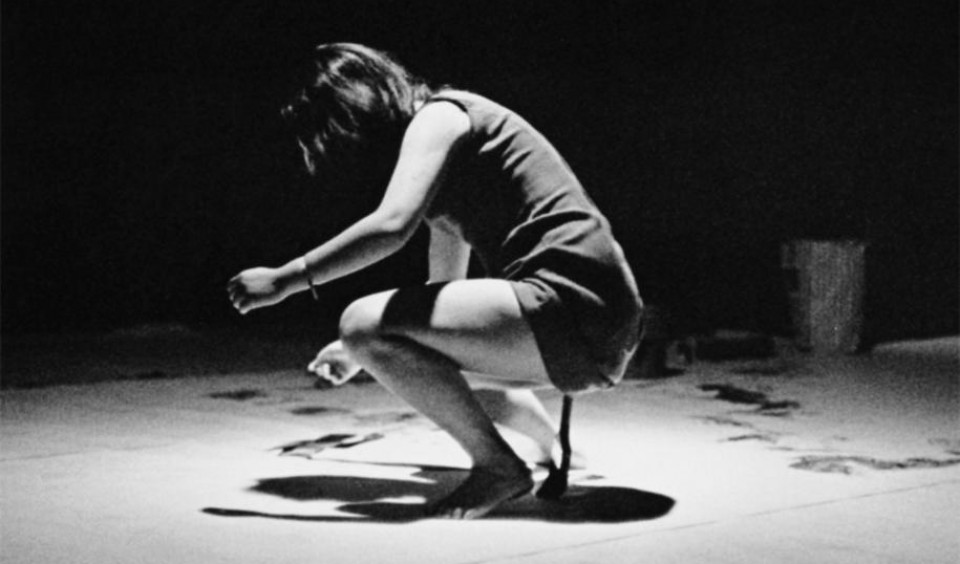
Shigeko Kubota, Vagina Painting, 1965
Chapter 5 looks at artists who create or modify tools. The authors note that although the history of art is closely linked to the history of technology, an innovative tool doesn’t have to be a sophisticated one. They illustrate the idea with Shigeko Kubota who attached a paintbrush to her underwear for her vagina paintings. The chapter on tools is a splendid one, it argues that making new tools is potentially a political act, it’s about expressing dissatisfaction with the status quo.
Chapter 6, called Cashing In, explores the relationship between art and value. There’s some great examples of artists subverting the market and the economy but somehow, i’m only going to mention good old Damien Hirst and For the Love of God, a work that suggests that society might be going back to ancient conception of art, as “a brute expression of wealth and power.”
Chapter 7 focuses on fabrication and on artists delegating the production of their works to highly qualified craftsmen, industrial machines and even whole factories. A century after Duchamp, the public still feels cheated if the artist is not the maker. Yet, there’s nothing new in this practice. Renaissance painters orchestrated the work of anonymous little hands to create large scale paintings for example.
Chapter 8 is all about digitalization and how the digital is finally understood by the art world as not being immaterial. I do love Cory Arcangel but i wish that authors of book of contemporary art would venture beyond Super Mario Clouds when they address digital practices.
Chapter 9 took me by surprise. It’s about crowdsourcing, a practice that was called grassroot organizing existed before the internet gave it a hip name.
Here’s a quick succession of works that the book made me discover or see under a new light:
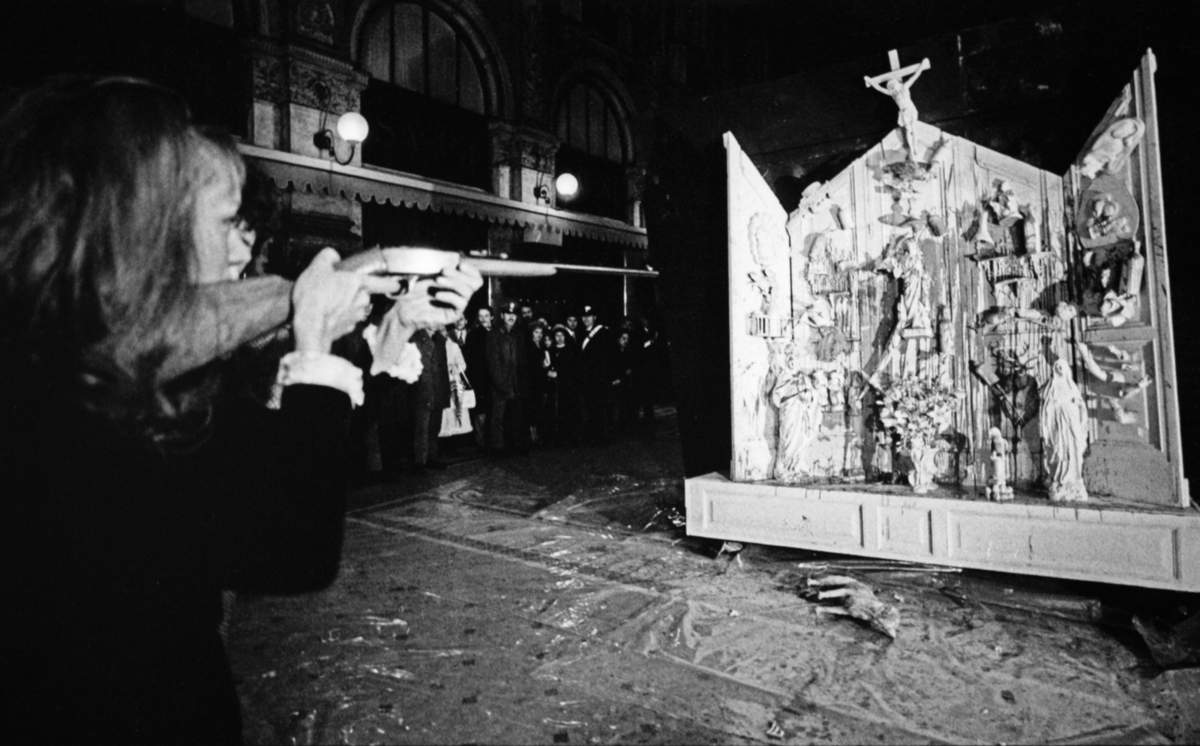
Niki de Saint Phalle shooting on her Autel, 1962 (photo via The Red List)
Niki de Saint Phalle broke out into the male-dominated art world of the 1960s with her series of Tirs (Shooting Paintings). She fitted plastic bags filled with paint behind paintings and sculptures. The bags would burst when she or other participant shot at the works.
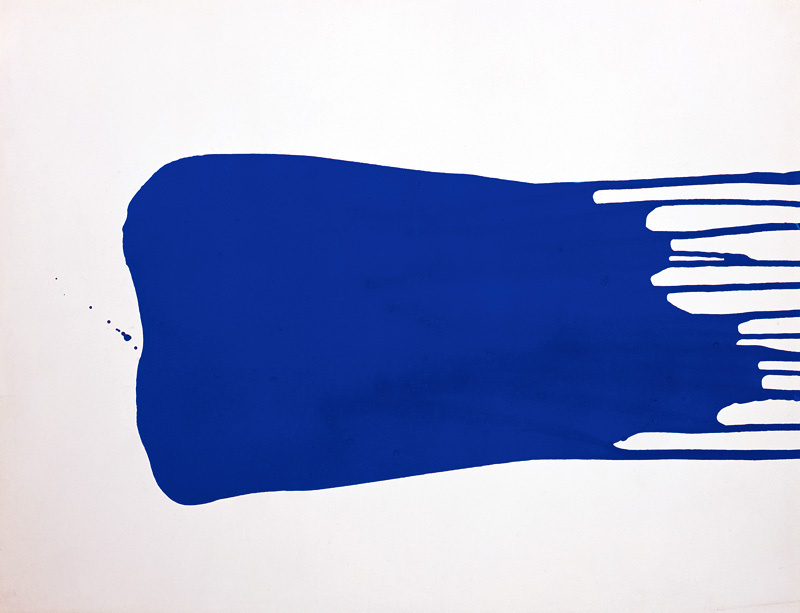
Yves Klein, Propositions monochromes (1’02) May 10 – 25, 1957
International Klein Blue collaborated with a Parisian art paint supplier to develop a deep blue hue.
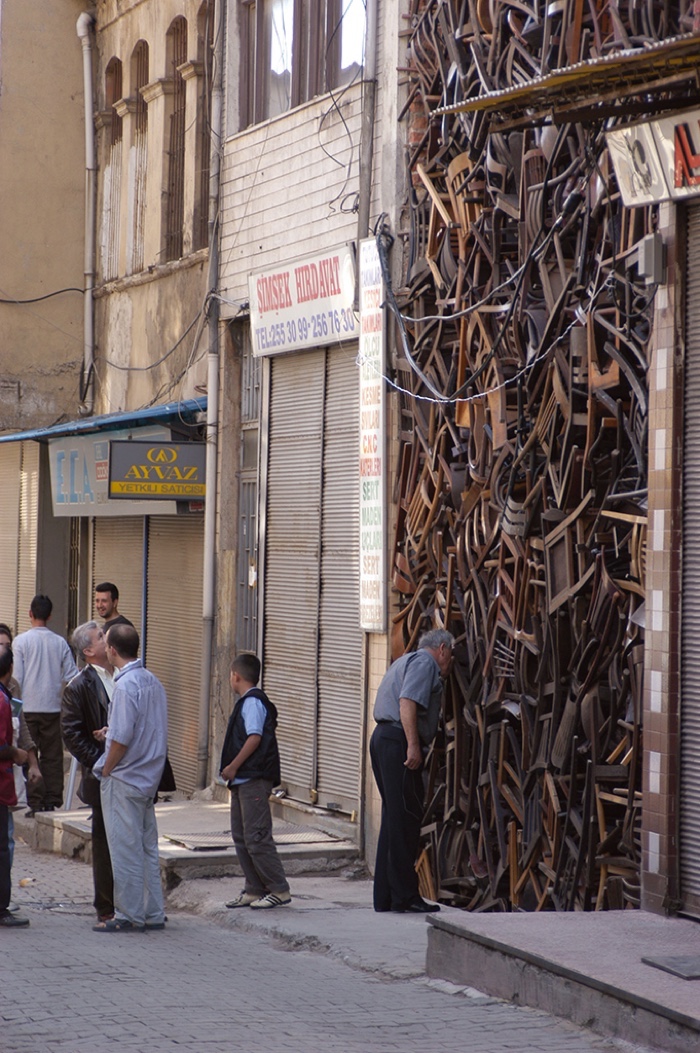
Doris Salcedo, 1550 Chairs Stacked between Two City Buildings, Istanbul, 2003
Doris Salcedo’s staked chairs conjure people who have been displaced, in particular faceless migrants who underpin the working of the global economy.
Santiago Sierra, Cube of 100 cm on each side moved 700 cm, 2002
Santiago Sierra‘s ‘3 Cubes of 100cm on each side moved 700cm’ was performance for a public art institution in Switzerland. Six illegal Albanian refugees without work permits were hired to move, at great physical pain, three large cement cubes from one wall of the gallery to the opposing one.
“Persons are objects of the State and of Capital and are employed as such”, said Sierra. In this work, as in many other of his performances, the artist (who has often been criticized for replicating rather than critiquing inequalities regarding power) uses human beings as if they were any other material.
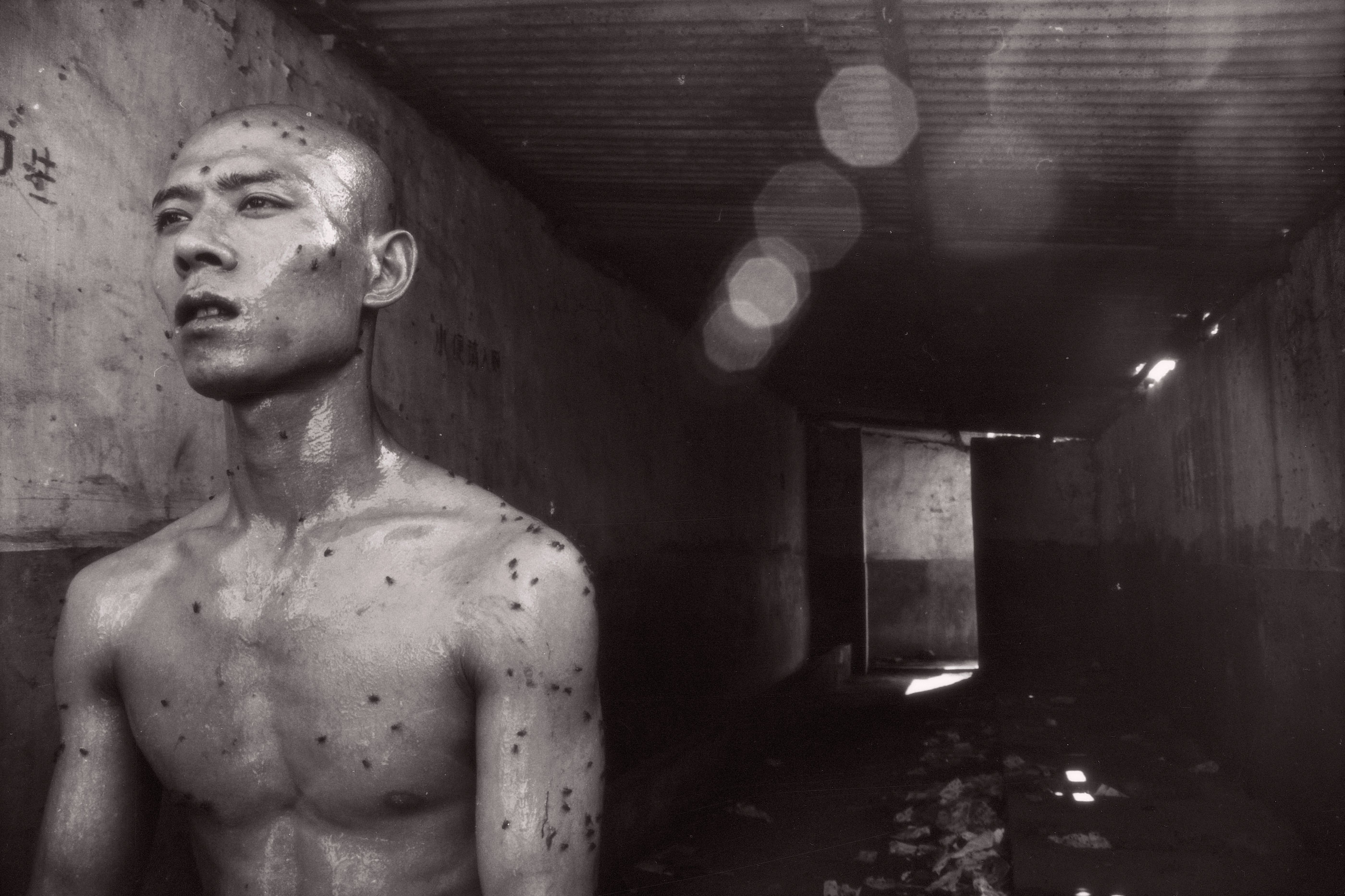
Zhang Huan, 12 Square Meters, 1994
On a hot Summer day of 1994, Zhang Huan sat in the most unhygienic public restroom he could find in Beijing. His skin was covered with fish oil and honey. Swarms of flies quickly came crawling on his body. His face remained impassible during this 40-minute performance.
Rumour has it that the performance was a tribute to Ai Weiwei’s father Ai Qing, who was made to clean filthy public toilets when he fell out of favour.
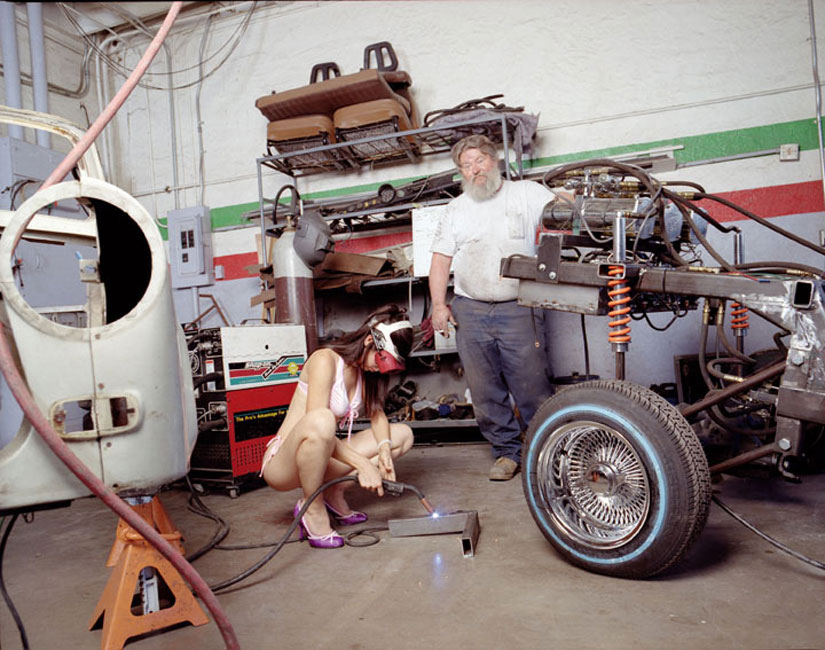
Liz Cohen, Bodywork Welder, 2005
Cohen gained fame with Bodywork, a project for which she apprenticed under car technicians to transform an East German 1987 Trabant car into a 1973 Chevrolet El Camino. Cohen submitted her own body to a similar transformation. She worked with a personal trainer and dieted to turn herself into a bikini model for car shows.
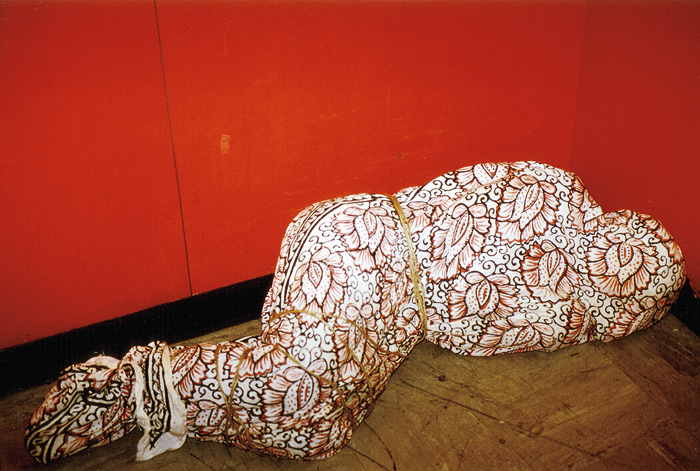
Guillermo Gómez-Peña, The Loneliness of the Immigrant, 1979/2011
Talking about his performance The Loneliness of the Immigrant, Guillermo Gómez-Peña said: I decide to spend 24 hours in a public elevator wrapped in batik fabric and rope, a metaphor for a painful birth in a new country, a new identity as “the Chicano,” and a new language, intercultural performance. The response of the people who shared the elevator with him was part of the performance. People kicked him as he laid passive, others ignored or interrogated. A dog urinated on him. Eventually the building’s security guards threw him in a garbage can.
rent-a-negro.com was a satirical web-art-performance created in 2003 by damali ayo. The site offered the possibility rent a black person for their personal entertainment or to advance their business or social reputation. rent-a-negro.com received over 400,000 hits per day in its first month, and attracted much media attention but also so many threats and unpleasant emails that in the end, the artist thought it would be safer to turn the potential performance into a conceptual artwork. The site remained online until 2012.
She wrote a guide of the same title though!
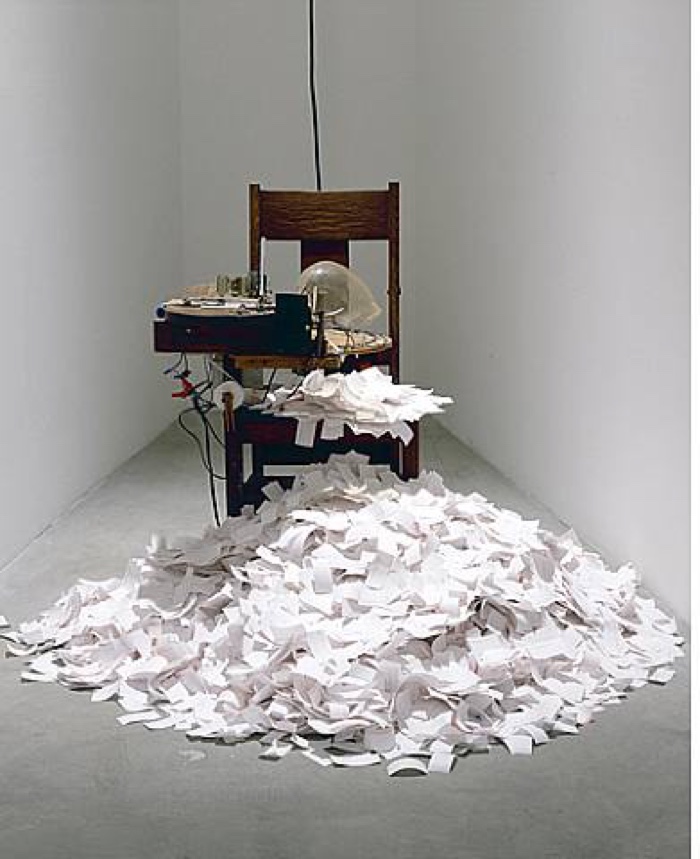
Tim Hawkinson, Signature Chair, 1993
A machine that signs ‘Tim Hawkinson’ onto a roll of paper, chops it off, and throws it onto an ever growing pile. The work was inspired by the autopen that executives used to employ on payday for issuing checks. The piece suggests that art has become synonymous with an artist’s signature to then be repeated endlessly.
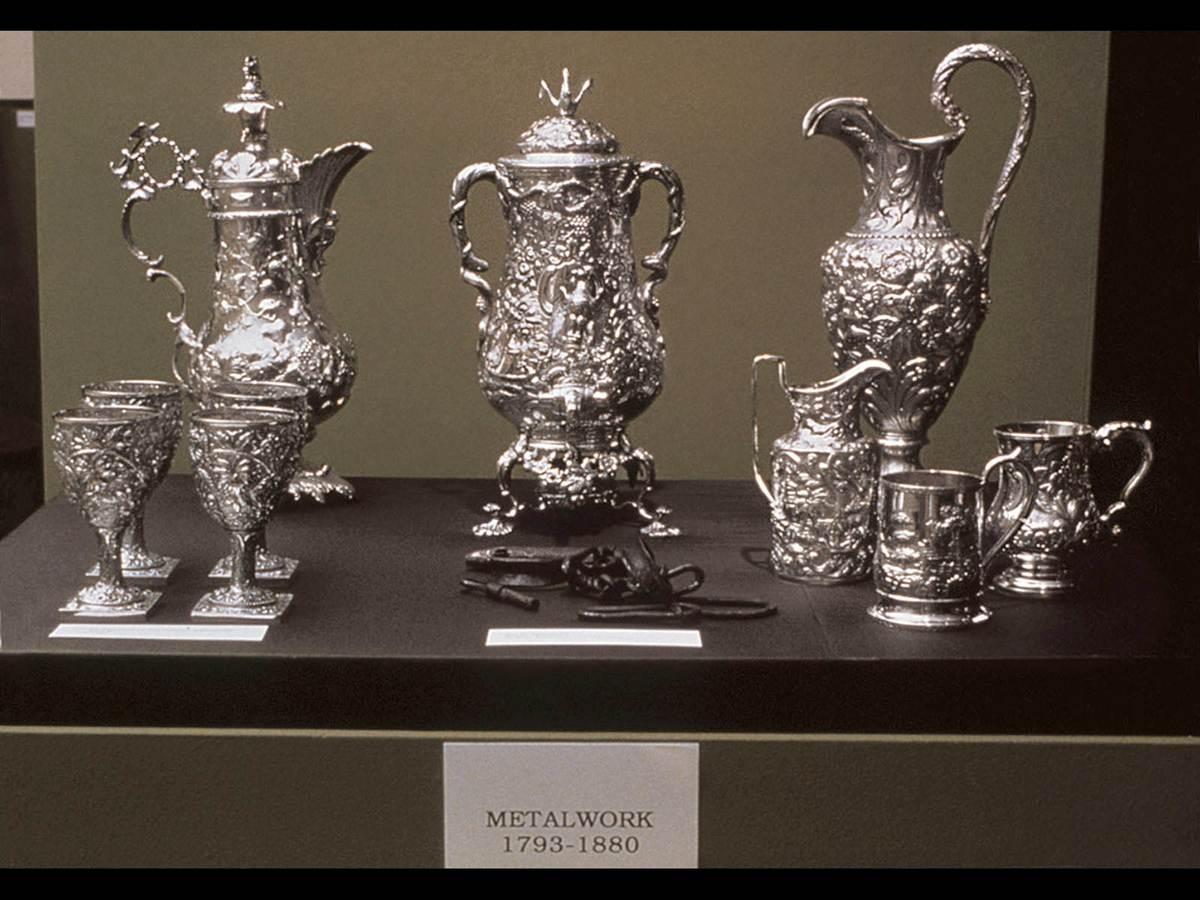
Fred Wilson, Metalwork 1793-1880, from ‘Mining the Museum‘, 1992-1993. Image via omgyrak
Fred Wilson’s exhibition project “Mining the Museum” presented Maryland Historical Society’s collection in a new, critical but also often satirical light that excavated American racial history in Maryland.
The installation “Metalwork 1793–1880” brought side by side ornate silver pitchers, flacons, and teacups with a pair of iron slave shackles, highlighting the link between the two kinds of metal works: The production of the one was made possible by the subjugation enforced by the other.
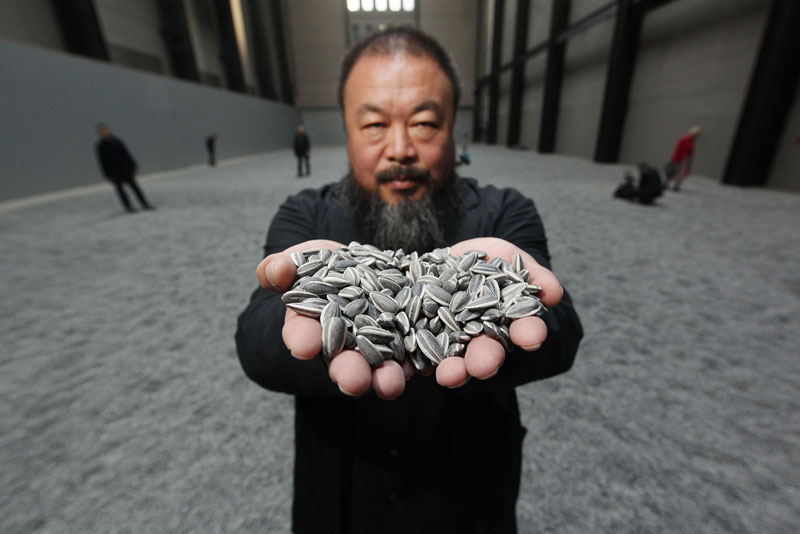
Ai Weiwei, Kui Hua Zi (Sunflower Seeds), 2010
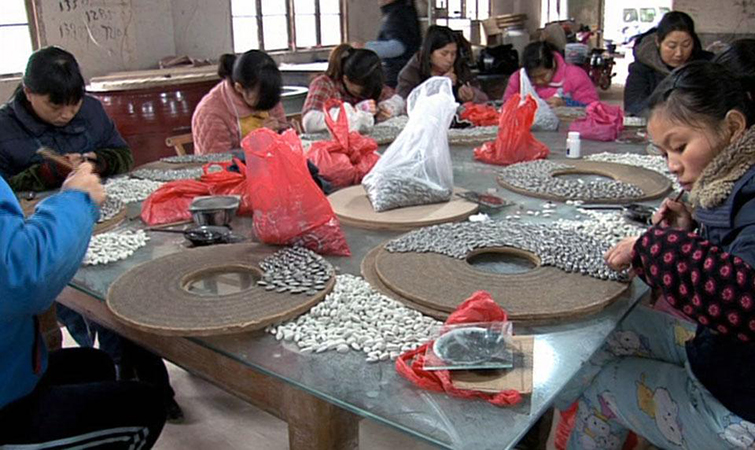
Some of the 1,600 highly skilled craftspeople from Jingdezhen hired to create and paint porcelain sunflower seeds. Image via Khan Academy
Ai Weiwei’s 100 million porcelain sunflower seeds covered the floor of Tate Modern in 2010. Each of the seeds had been handcrafted by skilled artisans from Jingdezhen. The work commented on the porcelain tradition in Jingdzhen, as well as on the cheap, fast and anonymous labor that is behind the hard-won and harshly criticised place of China in global economy. Sunflower Seeds also asks us to consider how our consumption of foreign-made goods affects the lives of others across the globe.
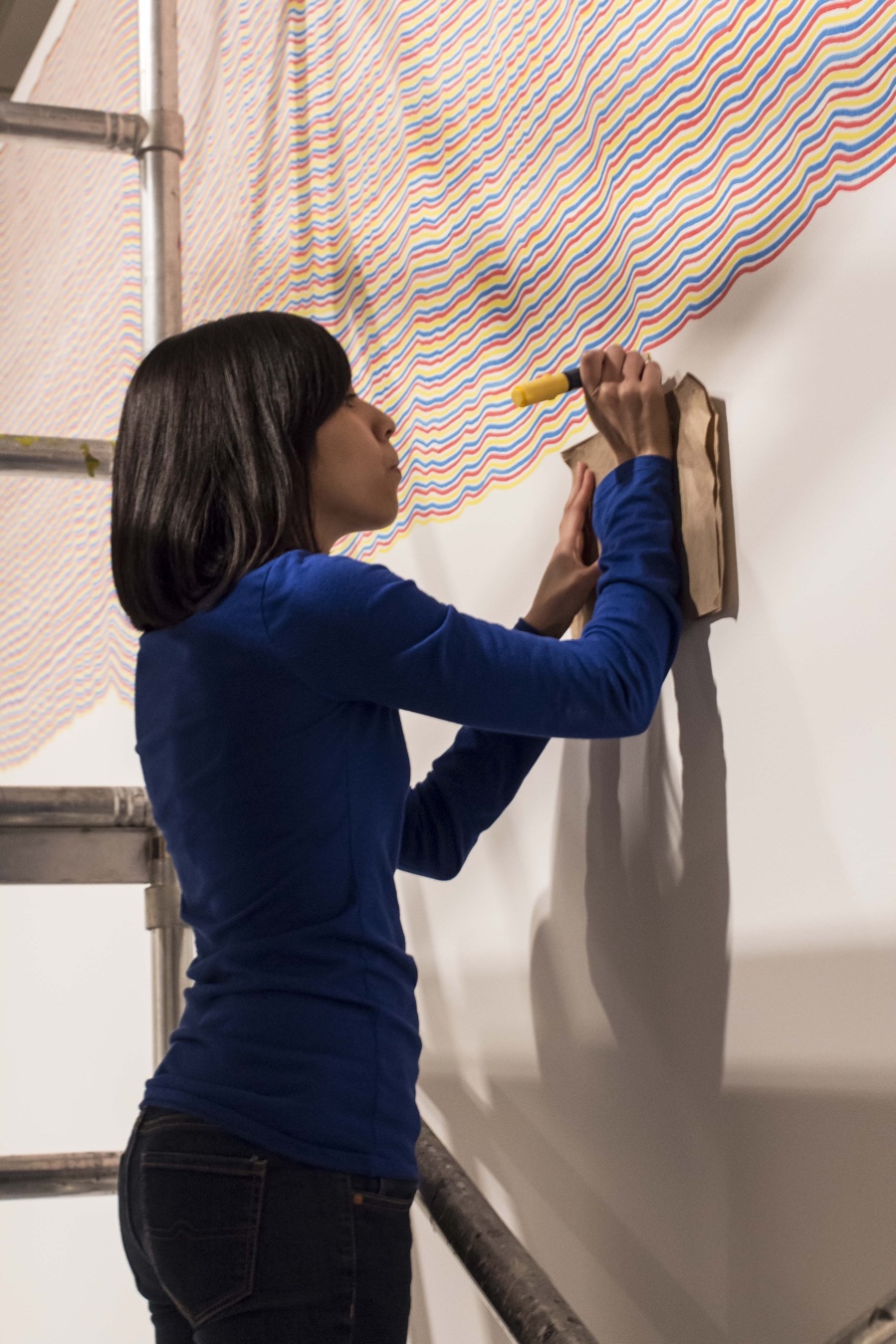
Milinda Hernandez drafting Sol LeWitt’s Wall Drawing 797, 2014
In 1968, LeWitt began to conceive guidelines or simple diagrams for his works drawn on walls. Executed by other people on walls that were most often slated for destruction, the series favours the creative idea that generates a work of art rather than its material existence.
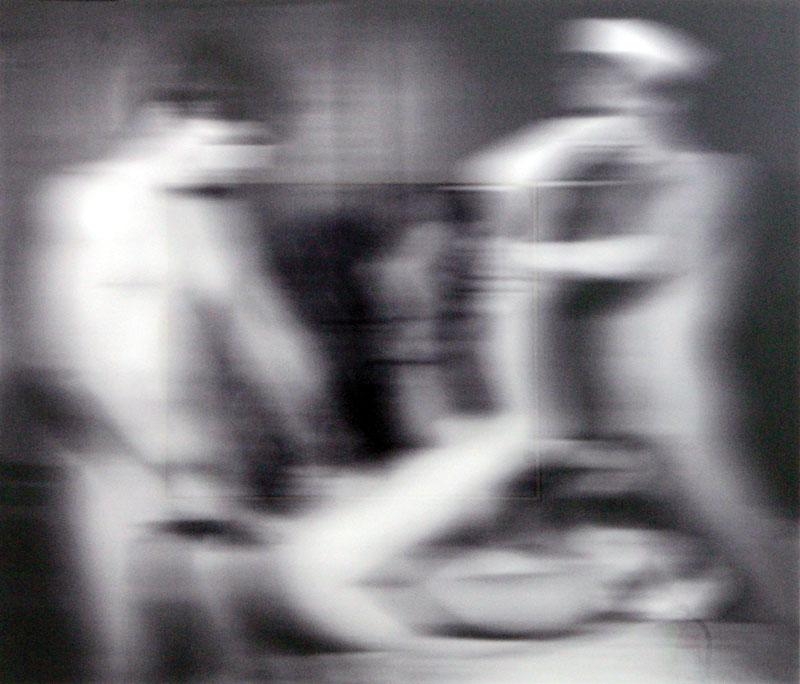
Thomas Ruff, Nudes FJ 23, 2000
Nowadays, the first encounter that people have with contemporary art takes the form of low res thumbnails on google images. Thomas Ruff’s jpegs are monumental but start as such tiny thumbnails. The artist then enlarges them to a gigantic scale, which exaggerates the pixel patterns until they become geometric displays of color.
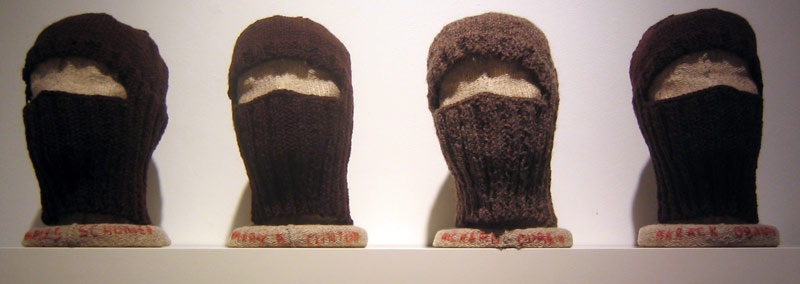
Cat Mazza, Stitch for Senate, 2007-2008
With Stitch for Senate, Cat Mazza asked knitters to hand knit helmet liners for every United States Senator. The work used the tradition of political organizing within knitting circles as a space for discussion, skill sharing and protest in the lead up to the 2008 senate elections. Every senator received their own helmet liner, mailed on President Obama’s Inaguration. A message accompanied the garment, asking for the return of US troupes from Iraq and Afghanistan.
